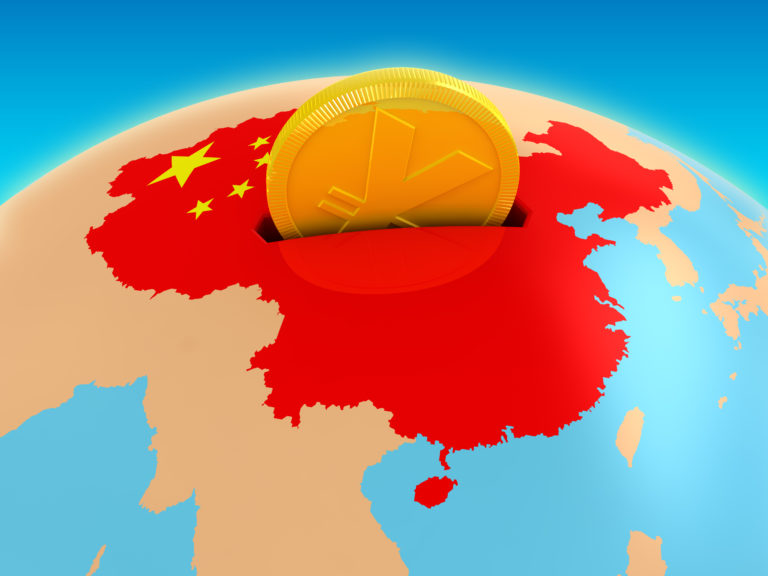It’s no secret China wants more tech savvy workers.
China’s top tech companies are poaching top talent from Silicon Valley. The Red Kingdom has 17 innovation hubs scattered across major cities. China is even considering opening up their top scientific grant to foreigners.
It’s all part of their Made in China 2025 plan. A plan which aims to upgrade China’s economy and growth model.
As you may have heard, Donald Trump is no fan of this plan.
He sees China as a deceitful country, benefiting from the sweat and hard work of Americans. Why do you think Trump has taken these trade talks so far in the first place? He wants America to remain a clear number one.
Yet what he doesn’t understand is that a stronger China actually benefits the US and the rest of the world. How do you think China has been able to grow so fast and so quickly?
They benefited from trades with countries far stronger then themselves.
Where’s productivity going to come from?
Before China was a manufacturing powerhouse, most Chinese families lived on farms. The country generated tons of food. But such low value tasks wouldn’t get them to where they’d like to be.
You have to understand, China believe they are the centre of the world. The oldest civilisation, and in their eyes, the greatest civilisation.
It makes sense (to China) that they should also lead the world to prosperity. It’s why Mao Zedong took people out of the farms and put them to work.
But instead of producing valuable goods, China ended up producing worthless scrap. And with not enough farmers to feed their growing nation, Mao’s plans led to one of the largest starvations in history.
After some reforms and common sense, China got the whole manufacturing thing down. Instead of producing worthless scrap, they were making goods they could sell to the rest of the world. And because of their huge cheap labour force, China gained an edge on the world stage.
For the longest time, this is how China grew. They pumped millions of workers into value added manufacturing. As a result China became a net exporter and rich in the process.
Not only did they become rich, their economy jumped leaps and bounds when trading with more advanced nations like America and Japan.
If we break it down, economic growth is just productivity and hours worked. So not only did China have millions more workers producing valuable goods. They also adopted technology and policies from places like America and Japan, which lead to a boom in productivity.
But like agriculture, today’s manufacturing in China can only get you so far. Soon China’s going to have to do something different. And it’s why China now wants to be a technology power house, so they can keep that growth machine humming.
Trump doesn’t see it that way…
Yet to Trump, China’s technology drive has nothing to do with higher living standards and prosperity. They simply want to be number one and use their power to force others into submission.
Keeping China down also makes Trump look like he’s putting the US first by trying to maintain their supremacy. But this whole being number one stuff is merely a pissing contest.
Surely the priority for China and the US is to increase the living standards in their country. And no matter who is number one, if both nations help each other towards prosperity then everyone wins.
For example, say China becomes a tech super power in five to 10 years. The Red Kingdom (hopefully not still red by that time) has developed technology that pushed productivity gains through the roof.
It would be to America’s benefit for China to reach that goal, as trading and the transfer of technology with such a nation only benefits America and everyone else.
While this probably won’t be the reality (everyone getting along), it’s a goal to strive for.
In the interim, markets will likely take more heat. A headline in the Australian Financial Review on Wednesday read ‘How will the FAANGs fare in a trade war?’
The FAANGs being Facebook, Inc. [NASDAQ:FB], Amazon.com, Inc. [NASDAQ:AMZN], Apple, Inc. [NASDAQ:AAPL], Netflix, Inc. [NASDAQ:NFLX] and Alphabet, Inc. [NASDAQ:GOOG].
On the same day, the South China Morning Post published a similar gloomy article ‘China think tank warns of potential “financial panic” in leaked note’.
‘Bond defaults, liquidity shortages and the recent plunge in financial markets pose particular dangers at a time of rising US interest rates and a trade spat with Washington, according to a study by the National Institution for Finance & Development (NIFD) which was seen by Bloomberg News and confirmed by a NIFD official.
‘The think tank warned that leveraged purchases of shares have reached levels last seen in 2015 — when the stock market fell by a third, wiping US$5 trillion off the value of Chinese equities.’
I’m not betting on huge market declines at this point. Instead it’s a time to keep calm and be ready for opportunities.
Your friend,
Harje Ronngard,
Editor, Money Morning
PS: I’d call this whole trade spat a non-event at this point. The only good thing to come out of it so far is a bit more volatility. Your attention would be put to far better use focusing on individual opportunities, rather than think about what will happen to the market.

